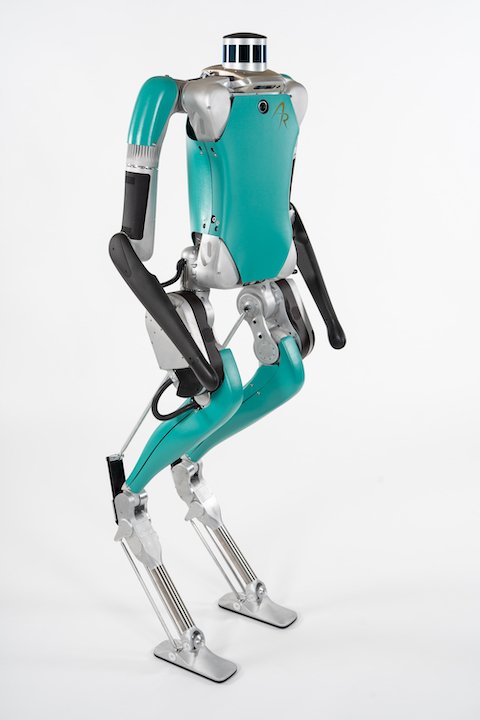How Digit Moves: The Case for Highly Effective Actuators
Engineering a robot to perform a variety of tasks in practically any environment requires rock-solid hardware that’s seamlessly integrated with software systems. We achieve this by testing our robot Digit using nuanced computer simulation – a critical step of our design process.
The simulation environment we’ve created is so close to real life that engineers can use it to test out new behaviors before the robot is even built. “We can actually use it to iterate different designs including things like the actuators, the sensor placements, the batteries, and potentially even the kinematics,” said Stefan Klein, a mechanical engineer here at Agility Robotics. This holistic process ensures an end result that’s mobile, versatile, and durable.
It’s important for Digit to be able to move accurately and fluidly, since it’s designed to work smoothly and safely in spaces designed for people. This is partially achieved through the use of actuators (a mechanical component that enables physical movement) in Digit’s arms and legs. There are a total of 20 actuators in Digit – four in each arm and six in each leg. These actuators enable Digit to almost fully collapse its legs and shuffle its entire body weight back and forth. This is possible because four of the actuators are of a larger variety that can handle heavier loads.
Actuators also allow Digit to reach out its arms and retract them when picking up objects. Two actuators in the shoulder area are within close proximity of each other so that Digit can raise its arms upward. Combined with the ability to rotate its body, Digit can pick up boxes of a variety of shapes and sizes and place them in high places, such as on warehouse shelves.
Thanks to the creative engineering behind these actuators, Digit is able to achieve quite a lot for a light-weight, bi-pedal robot.


